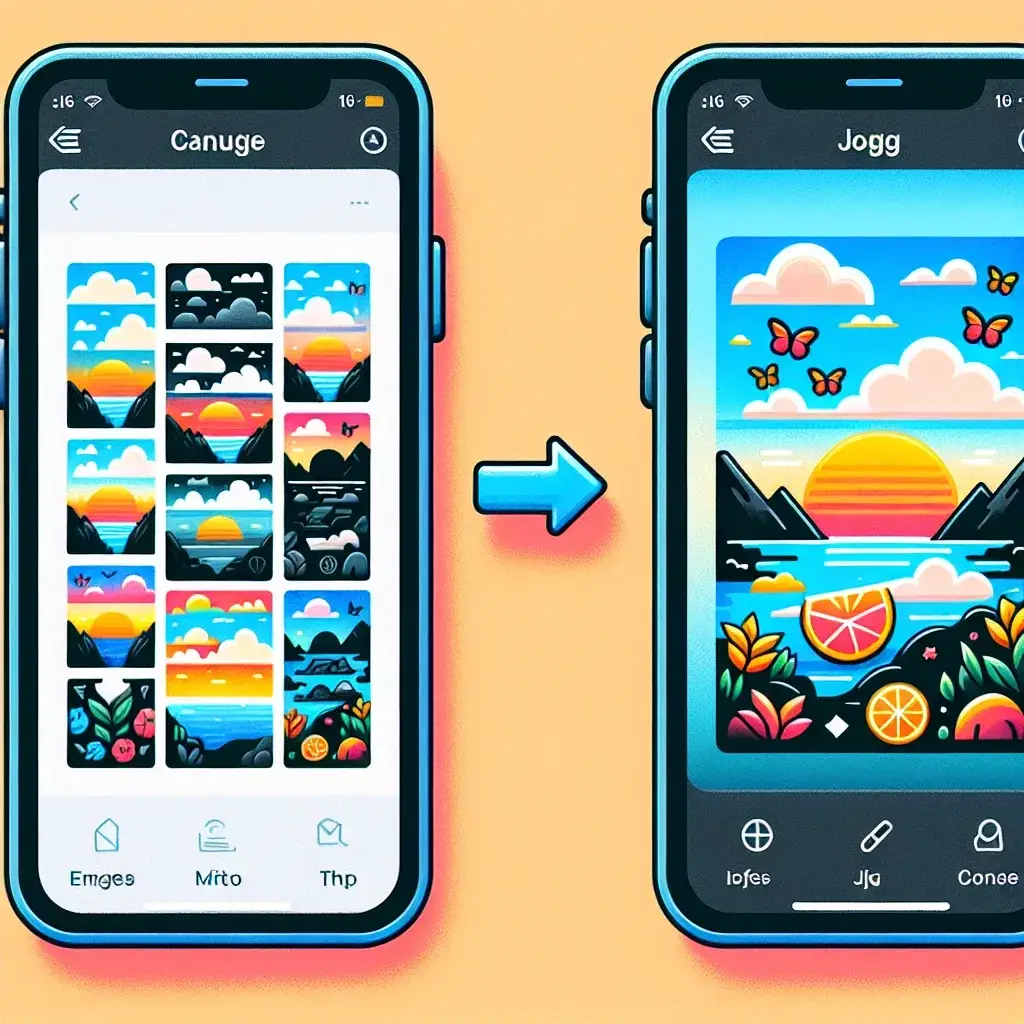HEIC to JPG: Mastering the Conversion Process
The High Efficiency Image File Format (HEIC) offers superior compression compared to JPEG, resulting in smaller file sizes without significant quality loss. However, JPEG remains the dominant image format, boasting near-universal compatibility. This often leads to the need to convert HEIC files to JPG. This guide will walk you through several methods, catering to different technical skill levels and needs.
Let’s explore the most effective and reliable ways to transform your HEIC images into the ubiquitous JPG format. From quick online solutions to more advanced software options, we’ve got you covered.
Method 1: Using Online Converters – The Quick and Easy Solution
Online HEIC to JPG converters provide a swift and straightforward solution, especially for users who need to convert a few images without installing any software. Numerous websites offer this service, allowing you to simply upload your HEIC file and download the converted JPG in seconds. The simplicity makes this the ideal method for casual users. However, remember to choose a reputable website—be wary of those that might compromise your privacy or security.
Many such websites offer bulk conversion, allowing you to convert an entire folder of HEIC files at once, saving you considerable time.
Pros: Quick, easy, no software installation required, often supports batch conversions.
Cons: Relies on internet connectivity, potential privacy concerns if using less reputable websites, may not be suitable for very large files or high-volume conversions.
Method 2: Leveraging Built-in Operating System Capabilities – A Convenient Choice
Both macOS and Windows have evolved to handle HEIC files more natively. Modern versions of macOS generally allow for automatic conversion of HEIC images to JPG when importing them into certain applications, such as email clients or photo editing software. This seamless integration streamlines the process, eliminating the need for external tools.
Similarly, Windows 10 and later versions offer improved support for HEIC. While not always automatic, the conversion process is often integrated into the operating system’s image viewing capabilities. You can right-click the image and select options to save or export it as a JPG.
Pros: No need for third-party software, often automatic or seamlessly integrated into the system.
Cons: System-dependent—the ease and availability of this feature vary across operating system versions and applications. The conversion settings might not always be customizable.
Method 3: Employing Image Editing Software – For Precise Control and Advanced Features
Professional-grade image editing software, such as Adobe Photoshop or GIMP (GNU Image Manipulation Program), offers complete control over the conversion process. These applications allow for fine-tuning of the conversion parameters, enabling you to maintain optimal image quality. The ability to perform other edits concurrently makes this an attractive option for users who regularly work with images.
These software packages typically support batch processing, enabling the efficient conversion of large numbers of HEIC files. This feature is particularly useful for photographers or graphic designers who handle many images simultaneously.
Pros: High degree of control, often allows for batch processing, can be used for other image editing tasks concurrently.
Cons: Requires more technical skill, software installation necessary, can be resource-intensive, potentially expensive for professional software.
Method 4: Utilizing Dedicated Conversion Software – Specialized and Efficient
Several dedicated image conversion applications are available specifically for tasks like converting HEIC to JPG. These often offer a user-friendly interface and advanced features like batch processing and lossless compression options. They provide a streamlined solution without the overhead of comprehensive image editing software.
These programs often prioritize speed and efficiency, making them ideal for users who regularly convert large volumes of images. Some even offer advanced features like metadata preservation during the conversion process.
Pros: Specialized and efficient, usually user-friendly, often excellent for batch conversions, might offer metadata preservation.
Cons: Requires software installation, may not provide as many editing options as professional image editors.
Choosing the Right Method: A Practical Guide
The best method for converting HEIC to JPG depends on your individual needs and technical proficiency. If you need to convert a few images quickly, an online converter is the most convenient option. For users comfortable with image editing software, Photoshop or GIMP provide superior control and flexibility. For regular batch conversions, dedicated conversion software may be the most efficient choice. Those who prefer to avoid installing additional software may find the built-in capabilities of their operating system sufficient.
Remember to always back up your original HEIC files before attempting any conversion, especially when using less familiar software or online tools. This precaution ensures that you won’t lose valuable images in case of unforeseen issues. Once you’ve chosen the best method, the conversion process is typically straightforward and requires minimal technical expertise.
Beyond the Conversion: Understanding File Formats and Their Uses
The choice between HEIC and JPG often boils down to a trade-off between file size and compatibility. HEIC’s superior compression makes it ideal for storage and sharing when compatibility isn’t a primary concern. On the other hand, the widespread compatibility of JPG makes it the default choice for many online platforms and applications.
As HEIC adoption increases, the need for conversion might gradually diminish. However, for the foreseeable future, understanding how to convert between these formats remains a valuable skill for anyone working with digital images.
For further information on image file formats and their properties, you can consult reputable resources such as Wikipedia. Understanding the nuances of different file formats allows you to make informed choices about how you manage and share your digital images.
Another excellent resource for learning more about digital image processing is the Example Website which offers in-depth tutorials and explanations.
In conclusion, converting HEIC to JPG is a straightforward process achievable through various methods. By carefully considering your specific needs and technological capabilities, you can select the most efficient and convenient approach. Remember to always prioritize the security and privacy of your data when using online tools.

